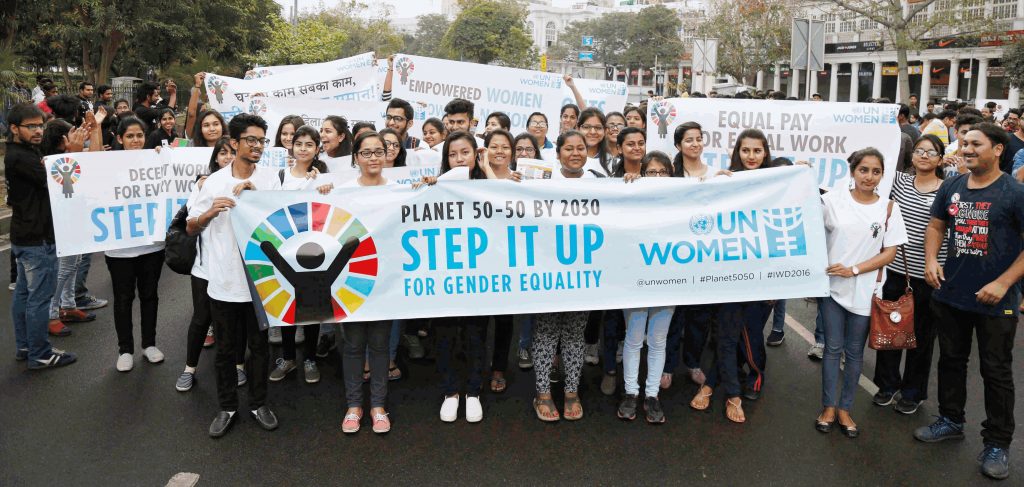Material World
Gender oppression in India

In the past couple of months we have witnessed a massacre in Atlanta USA targeting Asian women, the New York Governor accused of being a serial harasser of his female employees, police forcibly dispersing a women’s protest against femicide in London, and large marches in Australian cities highlighting the violence against women. In Mexico, there have been protests against the government’s support for a political ally accused of rape as well as widespread police inaction concerning the assaults and murders of women. While in Turkey nationwide demonstrations took place as President Erdogan withdrew Turkey from an international agreement to prevent violence against women. With such resistance from women against the violence inflicted upon them now featuring in the media, we should not forget other forms of repression and oppression of females.
In India, dowry is another form of injustice done to women and it is an ubiquitous system alongside the pernicious arranged marriages where daughters are traded as property and a commodity. The heavy toll demanded by dowry prices has resulted in female foetuses being aborted to ensure families have boys.
Dowry is the tradition when a new bride from all kinds of families and backgrounds will present the groom and his family with property, gold, money, household appliances, a motorbike or car, and in rural districts, livestock. The dowry system has been prevalent in South Asian countries for centuries. Among the Adivasi tribes and in other nations such as Thailand, the dowry system works in the reverse direction, the groom’s family pays the dowry price.
India has an alarming rate of crime over dowry and great numbers of suicides of women. It is essentially a commercial contract between the family of the bride and the family of the groom. There are countless other stories of abuse, and dowry-related deaths if the contractual agreement is not completely fulfilled. The man’s family’s honour and status are seen to be impinged.
Statistics show that every 16 minutes there is a rape, one death in each hour and 20 women die in a day. There were 7,000 dowry-related deaths in 2017. However, these are only the reported figures and they do not include deaths from ‘kitchen fires’ and other suspicious ‘accidents’.
Dowry persists as part of India’s marriage customs although its form and the damage to women vary according to the norms of the different communities. Dowry in India is not limited to any specific religion. Although dowry is primarily associated with marriages in Hindu society it has permeated over the generations into other religions such as Muslims, Christians and to some extent also the Sikh community. Religions have reinforced male domination where the woman is subject to her husband and her in-laws. In addition, the dowries and consequent elaborate wedding ceremonies bring financial debts that can rarely be paid off.
India has already enacted legislation in attempts to counter the problems of dowry. 60 years have elapsed since the Dowry Prohibition Act was passed to prohibit the practice of giving or receiving dowry and has been subsequently amended to curb the practice of dowry. To further strengthen the anti-dowry law and to stop offences of cruelty by the husband or his relatives against the wife, new provisions were added to the Indian Penal Code to provide extra protection from dowry harassment. India also passed legislation specifically for Muslim women, while Bangladesh passed a Dowry Prohibition Act in 1980. This law legally banned dowries and imposed sanctions by declaring that accepting dowry could land someone in jail, or a fine, or both.
Those laws have not put an end to dowry. It is an understatement to say that dowry-violence-related laws have failed, as India still has the cruel reality of dowries and dowry-related crime. These laws have been largely ignored or not effectively enforced and when prosecutions do occur the acquittal rate is high with the dowry disguised as a ‘voluntary contribution’ to the wedding expenses. It is a cultural convention which cannot be eradicated solely by law alone. In India, patriarchal practices have relegated millions of women to mere procreation and performing the household chores.
Legislation is an inadequate tool to ensure that women who marry stay unharmed and alive. Such a conclusion also applies globally with violence against women endemic in every country and culture even where there exists no dowry system. Violence against women can only end with education, empowerment and the emancipation of all humanity. Socialism will be the source of the freedom of a life without fear.
ALJO
2 Replies to “Material World”
Leave a Reply
You must be logged in to post a comment.

Dowry payments in India’s villages have been largely stable over the past few decades, a World Bank study has found.
Researchers looked at 40,000 marriages that took place in rural India between 1960 and 2008. They found that dowry was paid in 95% of the marriages even though it’s been illegal in India since 1961. The practice, often described as a social evil, continues to thrive and leaves women vulnerable to domestic violence and even death.
https://www.bbc.com/news/world-asia-india-57677253
Dowries have been illegal in India for 60 years, but the custom is entrenched. India records more than 8,000 “dowry deaths” each year; 20 women die each day through suicide or murder related to dowry demands. Dowries plunge poor families into debt and female foetuses are aborted because couples do not want a girl.
https://www.theguardian.com/global-development/2021/sep/08/deeply-rooted-tradition-one-mans-long-fight-to-end-dowries-in-india